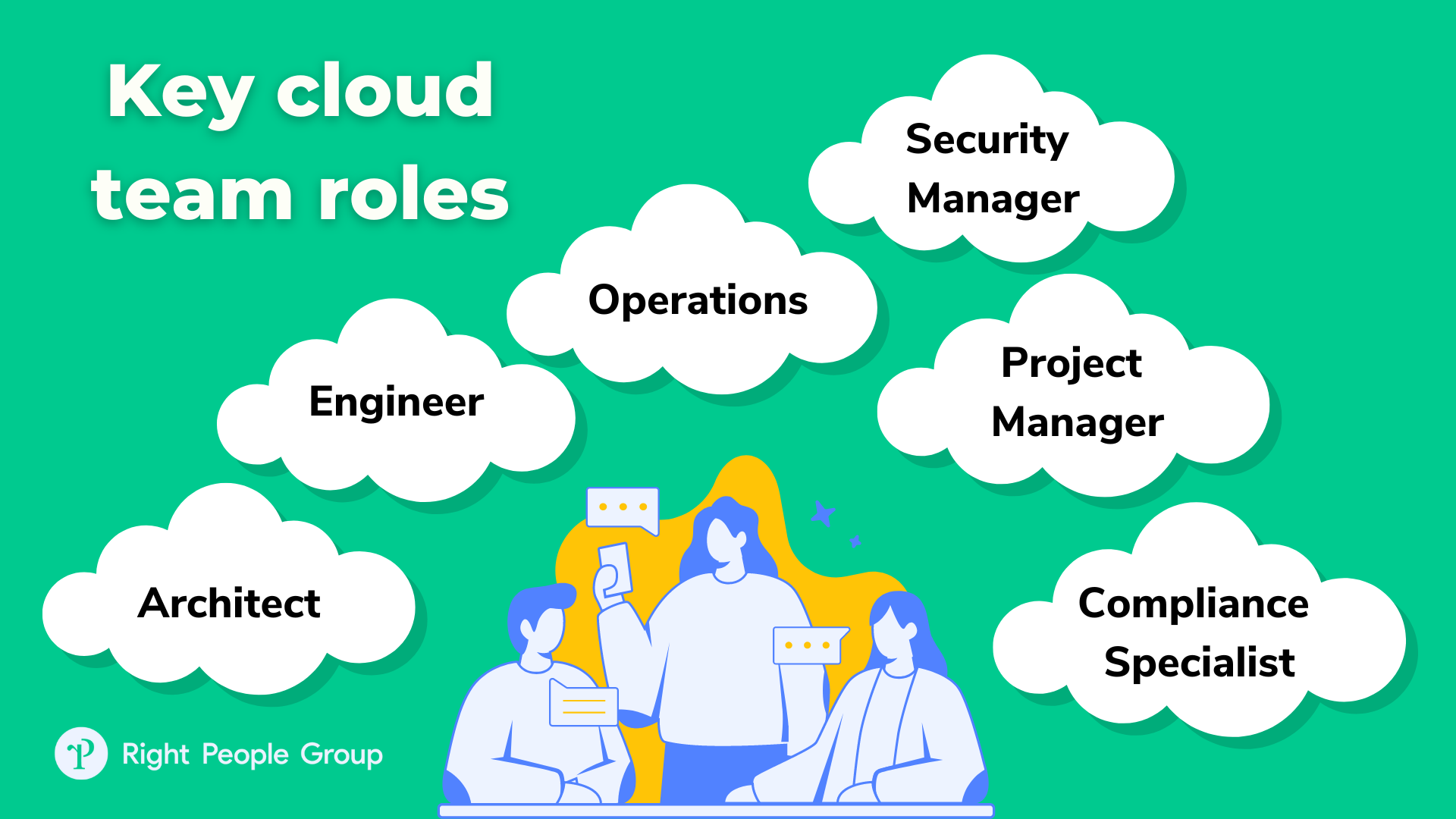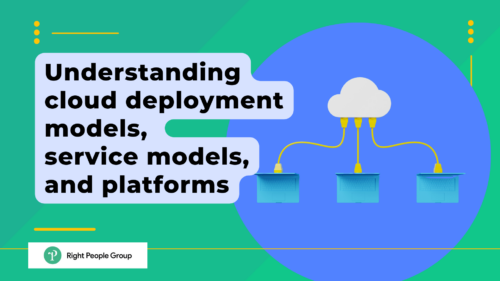Building a successful cloud team is vital for businesses that want to fully leverage the benefits of cloud technologies. With more and more companies migrating to the cloud, having a well-organized team with clearly defined roles and responsibilities has become a must. A top-performing cloud team must work seamlessly to guarantee effective management of cloud infrastructure, operations, and security.
In this post, we’ll provide you with valuable insights on how to structure a successful cloud team, the essential cloud team roles and responsibilities, and best practices to enable your team to thrive. We’ll explore everything from choosing the right team structure for effective collaboration to identifying the critical roles needed for successful cloud management.
Building a successful cloud team
To build a successful cloud team, it’s essential to identify the key roles and responsibilities necessary for effective cloud management. The following are the key cloud team members:
Cloud architect
A cloud architect is a crucial role in the cloud team responsible for designing and implementing the overall cloud architecture. A cloud architect should have a deep understanding of various cloud technologies, services, and platforms. This includes public, private, and hybrid cloud platforms, cloud storage solutions, and networking. They should also understand the various cloud deployment models and be able to design and implement cloud solutions that meet the organization’s business objectives and outcomes. The cloud architect is responsible for creating the cloud strategy, planning for the migration of existing applications to the cloud, and ensuring that the cloud environment is scalable and secure.
Cloud engineer
The cloud engineer is responsible for building and maintaining the cloud infrastructure and environment. This includes the creation and management of virtual machines, cloud storage, and networking components. The cloud engineer should have a deep understanding of cloud infrastructure as code, automation, and containerization. They should also be proficient in multiple programming languages and be able to automate the deployment of cloud services and applications. The cloud engineer is responsible for ensuring that the cloud environment is optimized for performance, availability, and scalability.
Cloud operations
Cloud operations is responsible for ensuring the reliability and performance of cloud services and applications. This includes monitoring the cloud environment, detecting and resolving issues, and performing regular maintenance tasks. They should have a deep understanding of cloud computing, network infrastructure, and troubleshooting. They should also be proficient in using various cloud monitoring tools and implementing automation to reduce manual tasks.
Cloud security manager
The cloud security manager is responsible for ensuring the security of the cloud environment and protecting sensitive data. This includes identifying potential security risks, implementing security controls, and enforcing security policies. The cloud security manager should have a deep understanding of cloud security best practices, compliance requirements, and security standards. They should also be proficient in implementing access control policies, protecting data in transit and at rest, and monitoring cloud security threats. The cloud security manager is responsible for ensuring that the cloud environment is secure and meets the organization’s security requirements.
Project manager
The project manager is responsible for overseeing cloud projects and ensuring service level agreements are met. This includes managing project timelines, budget, and resources, and communicating with stakeholders. The project manager should have a deep understanding of project management methodologies and be able to manage complex cloud projects. They should also be proficient in identifying and mitigating project risks and ensuring that project outcomes meet the organization’s business objectives.
Compliance specialists
Compliance specialists are responsible for ensuring cloud governance and compliance with security standards and regulations. This includes implementing compliance audits and providing recommendations for improvements. The compliance specialist should have a deep understanding of cloud compliance requirements, regulations, and standards. They should also be proficient in implementing compliance controls, protecting sensitive data, and monitoring cloud compliance threats. The compliance specialist is responsible for ensuring that the cloud environment meets the organization’s compliance requirements.

Cloud team structures
When it comes to building a successful cloud team, one of the most important decisions you’ll make is selecting the right team structure. There are three main cloud team structures to consider: centralized, decentralized, and hybrid.
A centralized team structure involves having all cloud-related responsibilities and tasks centralized under one team or department. This structure can be beneficial for organizations with a high level of cloud adoption, as it allows for a centralized approach to managing cloud services and applications.
On the other hand, a decentralized team structure involves distributing cloud-related responsibilities and tasks across multiple teams or departments. This structure can be helpful for organizations with a smaller size and a lower level of cloud adoption, as it allows for greater flexibility and autonomy among teams.
A hybrid team structure is a combination of both centralized and decentralized structures, where some cloud-related responsibilities are centralized while others are decentralized. This structure can be helpful for organizations that have varying levels of cloud adoption across different teams or departments.
When deciding on the right team structure, it’s important to consider the needs of your business stakeholders and the overall goals of your organization. For example, if your organization values flexibility and agility, a decentralized or hybrid team structure may be more suitable. However, if your organization requires a standardized approach to cloud management, a centralized team structure may be a better fit.
Ultimately, the right team structure will depend on the unique needs and goals of your organization, and careful consideration should be given to selecting the structure that will best support the success of your cloud initiatives.
Conclusion
Building a successful cloud team is crucial for effectively managing and optimizing your organization’s cloud environment. The right team structure, key roles, and effective communication and collaboration are essential for success. By following the best practices outlined in this post, you can build a high-performing cloud team that meets the needs of your organization and delivers business value.













